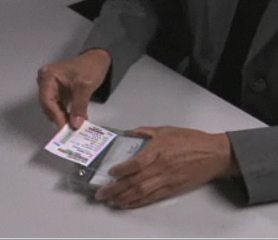GIA strives to make sure diamond grading is objective and fair, keeping a standard in the diamond market, so that the public can buy a diamond with a GIA report and know that the report is accurate and absolutely impartial. This creates the ultimate peace of mind for your diamond purchase.
GIA takes elaborate steps to ensure that its grading processes remain impartial. One way is by making sure that a diamond goes through the process anonymously – meaning that the graders and gemologists who examine the stone do not know who its owner is, and the diamond’s owner has no way of knowing who grades his stone. This ensures that a diamond will be evaluated with the utmost objectivity and integrity.
Blind grading is very important because a diamond’s price is directly tied to its grade. So you want to be certain that the grade is based on independent, unbiased evaluation. As a scientific institute dedicated to protecting the public trust, GIA remains scrupulously focused on nothing but the truth of the stone.
When GIA receives a diamond at the laboratory, it’s immediately placed into a custom designed, transparent storage case, and all references to its owner are removed or concealed.

The diamond is then assigned a bar-coded label with a unique internal identification number that is used to track it throughout the grading process.


GIA’s Inventory Control Department serves as the hub for laboratory operations. Between grading process steps, a diamond is distributed from and returned to this department, ensuring that the distribution of diamonds to graders is random. This is just one of several critical measures in an independent and impartial grading process.
Additionally, client information is masked within the software diamond graders use to enter their assessments. GIA asks clients to assist in this process by submitting items in parcel papers free of information that identifies them as the client or refers to grading information.
https://www.gia.edu/lab-reports-services/diamonds/index.html
Custom Field: Array
